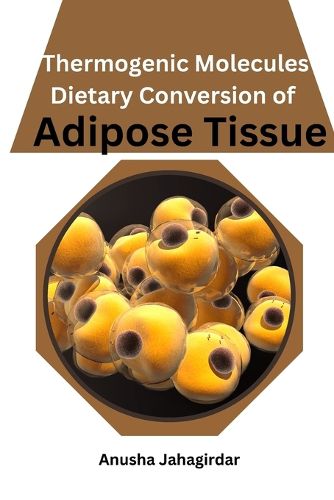Readings Newsletter
Become a Readings Member to make your shopping experience even easier.
Sign in or sign up for free!
You’re not far away from qualifying for FREE standard shipping within Australia
You’ve qualified for FREE standard shipping within Australia
The cart is loading…






This title is printed to order. This book may have been self-published. If so, we cannot guarantee the quality of the content. In the main most books will have gone through the editing process however some may not. We therefore suggest that you be aware of this before ordering this book. If in doubt check either the author or publisher’s details as we are unable to accept any returns unless they are faulty. Please contact us if you have any questions.
"Thermogenic Molecules: Dietary Conversion of Adipose Tissue" by Anusha Jahagirdar is a comprehensive guide that delves into the molecular mechanisms underlying energy expenditure and obesity. The book covers topics related to the biology of adipose tissue, including brown adipose tissue (BAT) and white adipose tissue (WAT), and their respective roles in regulating energy expenditure and metabolism. The book provides a thorough understanding of the molecular and cellular mechanisms of thermogenesis and how it contributes to energy expenditure. It discusses the role of mitochondria and uncoupling protein 1 (UCP1) in thermogenesis, as well as the activation of thermogenesis by sympathetic nervous system and catecholamines. The book also explores the regulation of nutrient sensing pathways, such as AMPK, mTOR, and PPARs, and their impact on thermogenesis and adipose tissue function. Furthermore, the book delves into the impact of various dietary components on thermogenesis, including carbohydrates, proteins, and fats, and the role of ketosis in regulating energy expenditure. It also discusses the impact of exercise, cold exposure, and diet-induced thermogenesis on adipose tissue function and energy expenditure. The book also covers the link between obesity and various diseases, such as diabetes, cardiovascular diseases, non-alcoholic fatty liver disease, and cancer, and how pharmacological interventions and natural compounds can modulate adipose tissue function and metabolism to prevent and treat these conditions. Overall, "Thermogenic Molecules: Dietary Conversion of Adipose Tissue" is a valuable resource for researchers, students, and professionals in the field of metabolism, nutrition, and obesity, providing a comprehensive overview of the molecular mechanisms regulating energy expenditure and their role in preventing and treating obesity-related diseases.
$9.00 standard shipping within Australia
FREE standard shipping within Australia for orders over $100.00
Express & International shipping calculated at checkout
This title is printed to order. This book may have been self-published. If so, we cannot guarantee the quality of the content. In the main most books will have gone through the editing process however some may not. We therefore suggest that you be aware of this before ordering this book. If in doubt check either the author or publisher’s details as we are unable to accept any returns unless they are faulty. Please contact us if you have any questions.
"Thermogenic Molecules: Dietary Conversion of Adipose Tissue" by Anusha Jahagirdar is a comprehensive guide that delves into the molecular mechanisms underlying energy expenditure and obesity. The book covers topics related to the biology of adipose tissue, including brown adipose tissue (BAT) and white adipose tissue (WAT), and their respective roles in regulating energy expenditure and metabolism. The book provides a thorough understanding of the molecular and cellular mechanisms of thermogenesis and how it contributes to energy expenditure. It discusses the role of mitochondria and uncoupling protein 1 (UCP1) in thermogenesis, as well as the activation of thermogenesis by sympathetic nervous system and catecholamines. The book also explores the regulation of nutrient sensing pathways, such as AMPK, mTOR, and PPARs, and their impact on thermogenesis and adipose tissue function. Furthermore, the book delves into the impact of various dietary components on thermogenesis, including carbohydrates, proteins, and fats, and the role of ketosis in regulating energy expenditure. It also discusses the impact of exercise, cold exposure, and diet-induced thermogenesis on adipose tissue function and energy expenditure. The book also covers the link between obesity and various diseases, such as diabetes, cardiovascular diseases, non-alcoholic fatty liver disease, and cancer, and how pharmacological interventions and natural compounds can modulate adipose tissue function and metabolism to prevent and treat these conditions. Overall, "Thermogenic Molecules: Dietary Conversion of Adipose Tissue" is a valuable resource for researchers, students, and professionals in the field of metabolism, nutrition, and obesity, providing a comprehensive overview of the molecular mechanisms regulating energy expenditure and their role in preventing and treating obesity-related diseases.